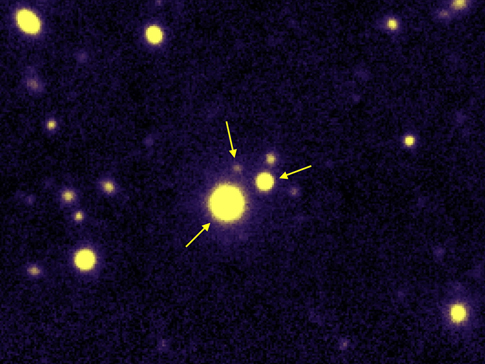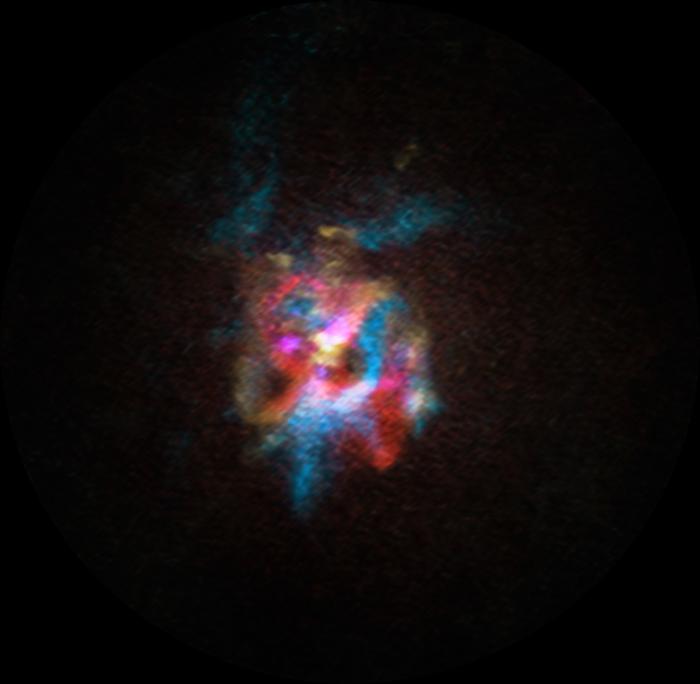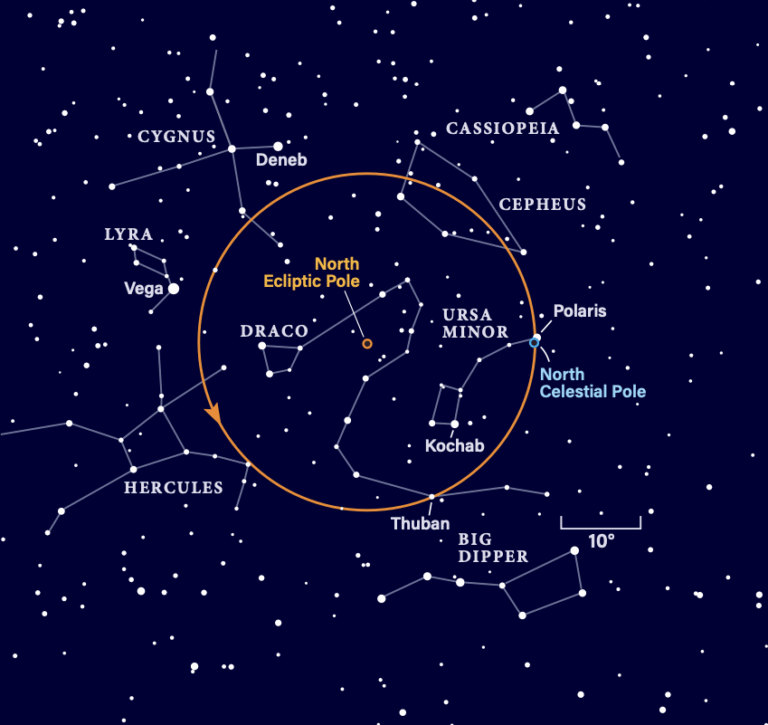Key Takeaways:
A team of American and Swiss astronomers found the first triple quasar. The cosmic beacon shines 10.5 billion light-years away in a space comparable in size to the Milky Way Galaxy. Astronomers believe the object represents an ongoing merger of three quasar-powered galaxies.
Astronomers have cataloged about 100,000 quasars, extremely luminous objects that populate the far universe. A single quasar can be 1,000 times brighter than an entire galaxy, yet the source of its prodigious energy comes from a region smaller than our own solar system.
“Quasars are believed to be powered by gas falling into supermassive black holes,” says Caltech’s George Djorgovski, who led the discovery team. “This process happens very effectively when galaxies collide or merge, and we are observing this system at the time in the cosmic history when such galaxy interactions were at a peak.” Djorgovski presented his findings this morning at the American Astronomical Society’s meeting in Seattle.
A team led by Paul Hewitt at England’s Institute of Astronomy discovered quasar LBQS 1429-008 in 1989. The astronomers also found what appeared to be a nearby companion quasar, although the team proposed it was merely a second image of the original quasar produced by gravitational lensing. The gravity of intervening galaxy clusters can warp light and produce multiple images of the same quasar.
Several groups have cast doubt on this conclusion, suggesting that the system is actually two individual quasars in close proximity to one another.
The Caltech-Swiss team found a third, fainter quasar associated with the other two. They used images from the Keck Observatory’s 10-meter telescope on Mauna Kea, Hawaii, and the European Southern Observatory’s 8.2m Very Large Telescope at Cerro Paranal, Chile, to spot the new object.
Djorgovski’s team performed extensive computer modeling to rule out the possibility that the system resulted from gravitational lensing. The team identified small but significant differences in the properties of the three quasars, and they were unable to find any galaxy capable of producing the phenomenon.
“It is essentially impossible to account for what we see using reasonable gravitational-lensing models,” says Frédéric Courbin at the Ecole Polytechnique Fédérale de Lausanne in Switzerland.
“We were left with an even more exciting possibility that this is an actual triple quasar,” says Georges Meylan, also from Lausanne. The three quasars are separated by roughly 150,000 light-years, a distance that would encompass the disk of our galaxy.
Many astronomers believe galaxy interactions triggered quasar activity. “In this case, we are lucky to catch a rare situation where quasars are ignited in three interacting galaxies,” says Ashish Mahabal, a team member at Caltech.
Discoveries of more such systems in the future may help astronomers better understand the fundamental relationship between the formation and evolution of galaxies, and the supermassive black holes in their cores. A paper describing the study will appear in a future issue of Astrophysical Journal Letters.










